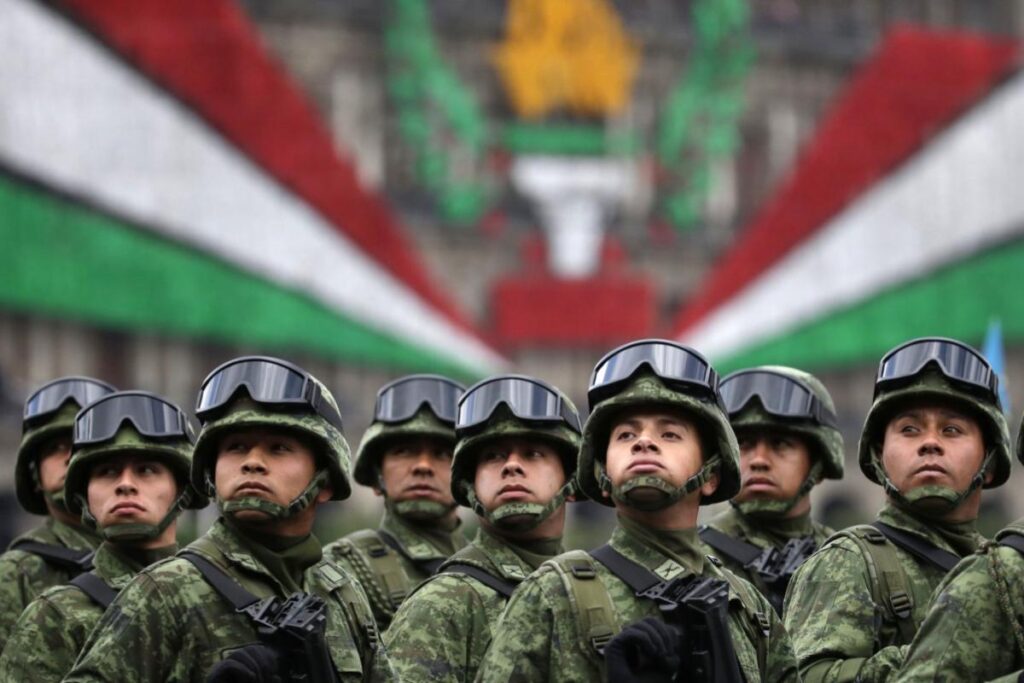Six terabytes of leaked information from Mexico’s Ministry of Defense (Secretaría de la Defensa Nacional – SEDENA) by the Guacamaya hacker collective have spilled plenty of well-kept secrets concerning the state of Mexico’s fight against organized crime.
From allegations of collusion between high-ranking government officials and major cartels to Army weapons being sold off to criminals and even a threat against the life of the Mexican president, InSight Crime explores the revelations to date from the SEDENA leaks.
- Did the Jalisco Cartel Infiltrate Tabasco’s State Government?
Mexico’s current interior minister and former governor of the southern state of Tabasco, Adán Augusto López Hernández, allegedly placed three men in high-ranking positions in his Tabasco government while they were all suspected of ties with organized crime.
Hernán Bermúdez Requeña, Tabasco’s current secretary of security and civilian protection, José del Carmen Castillo Ramírez, commissioner of Tabasco’s state police, and Leonardo Arturo Leyva Ávalos, director-general of the state police were all suspected of being part of a group within the government which assisted organized crime, according to leaked reports from Mexico’s Southeastern Regional Center of Intelligence Compilation (Centro Regional de Fusión de Inteligencia Sureste – Cerfi). All three men remain in these positions.
According to one Cerfi report, dated August 30, 2022, the three men were believed to be part of La Barredora, a cell of the Jalisco Cartel New Generation (Cartel Jalisco Nueva Generación – CJNG), connected to oil theft.
Of the many Cerfi reports included in these leaks, some state that the members of La Barredora in Tabasco’s government offered to free specific prisoners in exchange for hefty bribes. Bermúdez Requeña is suspected of close ties to Benjamín Mollinedo Montiel, alias “Pantera,” leader of La Barredora until his arrest in September 2021.
According to Mexican magazine Proceso, Bermúdez Requeña allegedly warned Pantera of security raids targeting him and offered to free his brother-in-law from jail in exchange for 500,000 Mexican pesos (around $25,000).
.
.
Proceso stated that more than ten Cerfi reports identified Bermúdez Requeña as a leader of the CJNG and also connected him to a well-known leader of the Zetas.
Bermúdez Requeña has categorically denied the accusations, telling Proceso that La Barredora did not exist and that while he could not speak for the 7,000 police under his command, he doubted the veracity of the leaked SEDENA documents.
“This is a good example of how networks between the state and criminal organizations are built at the local level, with local results that can lead to a far lower level of violence,” Mexican security analyst, Jaime López-Aranda, told InSight Crime, adding that it remained to be proven if the leaked reports were true.
According to him, while violence in Tabasco is lower than in other regions of Mexico, criminal groups there can maximize their influence over local authorities to ensure their operations will not be affected. In the case of the CJNG in Tabasco, this could stretch to extortion, contraband, oil theft, and cattle trafficking.
- Army Weapons Sold to Criminal Groups
One enterprising Mexican Army officer, with access to military supplies, successfully supplied 70 fragmentation grenades, as well as weapons and tactical equipment, to a cell of an unnamed drug trafficking cartel near Mexico City, according to one leaked intelligence report whose contents were published by Mexican newspaper El Financiero.
Dated June 2019, the report stated that supplies were stolen from military bases in Mexico City and the State of Mexico and sold to the group in Atlacomulco, a town near the capital. Each fragmentation grenade was reportedly worth 26,000 Mexican pesos (around $1,300). Only eight were confirmed as having been sold.
On separate occasions, the officer was given a shopping list of ammunition to provide the group, including rounds and clips for AK-47 and AR-15 rifles. Finally, he allegedly offered to provide the criminals with information as to the whereabouts of a prosecutor in the State of Mexico, who was a target for assassination.
- From Oil Thieves to Assassins
Shortly after taking power in 2018, President Andrés Manuel López Obrador (AMLO) made cutting down on oil theft his national security priority. While less violent than drug trafficking, oil theft, known as huachicol in Mexico, costs billions of dollars a year and gangs specialized in this crime have gone on to become major security threats.
AMLO’s crackdown on huachicol temporarily hurt oil thieves, some of which saw the president as a hypothetical target. In April 2019, a narcomanta (a banner with messages from criminal groups) was left outside on a bridge in Guanajuato, threatening the life of AMLO. The group responsible, believed to have been the Santa Rosa de Lima Cartel, claimed they would leave a bomb in AMLO’s house shortly after an explosive device was found at an oil refinery in Guanajuato.
However, the recent SEDENA leaks have shown this was not the only threat made against the president. An intelligence report from February 2019 revealed by the newspaper El Universal recorded messages within an oil theft group lamenting the fact that they had no money due to the government crackdown. They had been forced to resort to extortion and robbery to make up for the lost income but that this had not been successful.
The audio file then spoke of a potential union between several criminal groups to assassinate the president. It does not appear this ever led to a concrete plan of action.
.
October 10, 2022 Published by The InsightCrime.







